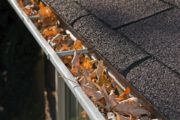
It seems like almost every homeowner has at least one home improvement project going on at all times. As exciting as it is to make improvements to one’s home, it can also get quite expensive at the same time. However, what many people do not realize or are unaware of is that certain home improvements can provide some significant tax savings for homeowners. The following outlines few examples of how certain home improvement projects might not cost quite as much as one thinks after accounting for tax savings.
- Homeowners can receive a federal tax credit for improving the energy efficiency of their homes. Examples of energy efficiency improvements that qualify for tax credits include adding insulation to an existing home, replacing a Central Air Conditioning unit with an ENERGY STAR Most Efficient rated unit, or replacing existing windows or doors with windows and doors that earn the ENERGY STAR designation. The amount of the credit is usually 10% of the cost (excluding installation costs) up to a maximum $500 credit. For a complete list of tax credits related to improving energy efficiency of your home, click the following link: https://www.energystar.gov/about/federal_tax_credits
- The cost of home improvements can also increase a homeowner’s tax basis in his or her home, which reduces the amount of capital gains that must be recognized when the home is sold. The total basis at the time of sale is the price a homeowner paid for his or her home, plus the closing costs paid at the time of the purchase plus the cost of improvements made to the property throughout his or her ownership. The amount of potential taxable gain is equal to the sales price minus the homeowner’s basis in the property. Thus, increasing basis in a property is a method for reducing potential taxable gain. For more information on this topic, visit the following link: https://www.irs.gov/help-resources/tools-faqs/faqs-for-individuals/frequently-asked-tax-questions-answers/capital-gains-losses-and-sale-of-home/property-basis-sale-of-home-etc/property-basis-sale-of-home-etc-3
- Certain home improvements can be included in a homeowner’s medical expenses deduction if the main purpose for the improvement is for the medical care of the homeowner, the homeowner’s spouse, or the homeowner’s dependent. Some examples include installing an entrance ramp to make a home wheelchair-accessible, widening doorways to accommodate wheelchairs or walkers, and lowering or modifying cabinetry. For a complete list of home improvements that can be claimed as medical expenses, click the following link, and scroll down to the “Capital Expenses” section. https://www.irs.gov/publications/p502/ar02.html#en_US_2015_publink1000178902
So before you decide to wait on your next home improvement project due to cost, investigate to see if there are tax credits available for the type of work you would like to do. You may find that the project is more affordable than you think! Happy home improvement!


Leave a Reply